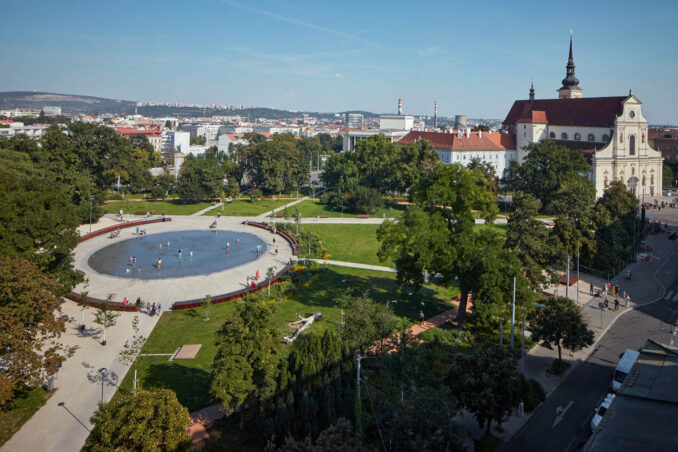
The park on the Moravian Square in Brno has become a new vibrant place, establishing its own poetics of peace and action, starkly contrasting the city’s constant commotion and traffic. The project represents a comprehensive approach to revitalising a heavily frequented public space in Brno’s historic centre, meeting the demands of the 21st century. It incorporates the blue-green infrastructure elements, environmental sustainability requirements and biodiversity, co-creating community, and embracing inclusivity.
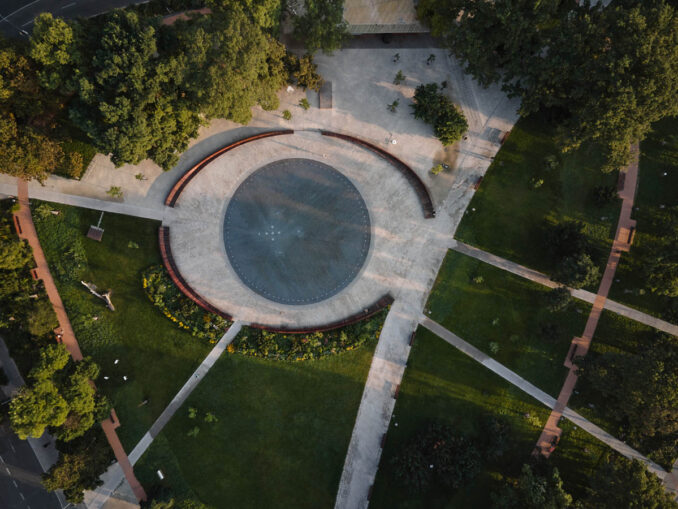
A distinctive and prominent feature is the central area, which introduces a new public space to Brno – the urban arena. It is a gathering place in the heart of the Moravian Square Park, featuring a fountain that creates a water mirror or a misty cloud. The arena is defined by a massive bench, providing a sense of serenity to the place and forming an embracing ring. This unique space is exclusively designed for pedestrians, offering a new concept – shared comfort. The generous bench invites a sense of freedom, where everyone can recline, sit, relax, and play. The place is therefore greatly enlivened. As the first light of day breaks, the arena comes alive. The fountain area transforms into a stage. There is always something to see and always something going on. It is a blend of action and tranquility on the water’s surface. Everyone passing by gets engaged in their movement. The water enhances every situation with a mirrored reflection. The fountain’s mode greatly influences the activity in the centre, attracting and encouraging interaction and play. As life in the public space flourishes in the summertime, the place teems with children. Adults also enjoy occasional refreshing moments. The location offers relaxation and activity, sunbathing and refreshment, earning its nickname ‘The Brno Sea.’ The central area, with its dynamic vibrancy and poetic calmness, is the core of the design. The place changes its rhythm with the seasons and even throughout the day.
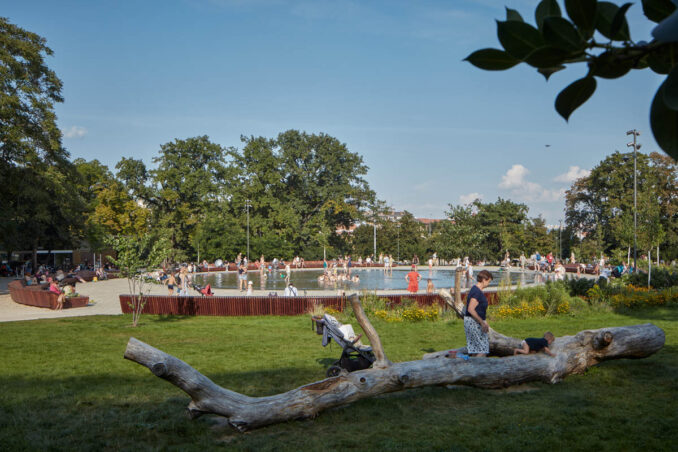
It was also highly important to discover the potential of the northern part and incorporate a café and a children’s playground into the new appearance of the park. Previously unused areas have been entirely transformed into an attractive place overlooking the newly discovered city vista with the Church of St. Thomas. The café pavilion acts as an interface between the park and the city, reinforcing the urban character of the otherwise traffic-heavy Koliště Street, gradually evolving into an urban boulevard. The café and its terrace conclude the circular shaded promenade beneath mature trees and create various spaces for relaxation and interaction. It provides amenities for its patrons, as well as for the adjacent children’s playground or its ‘speakers corner,’ where occasional small theatre, musical, and other events take place. The café serves as an important generator of social and communal activities and becomes the focal point of the park.
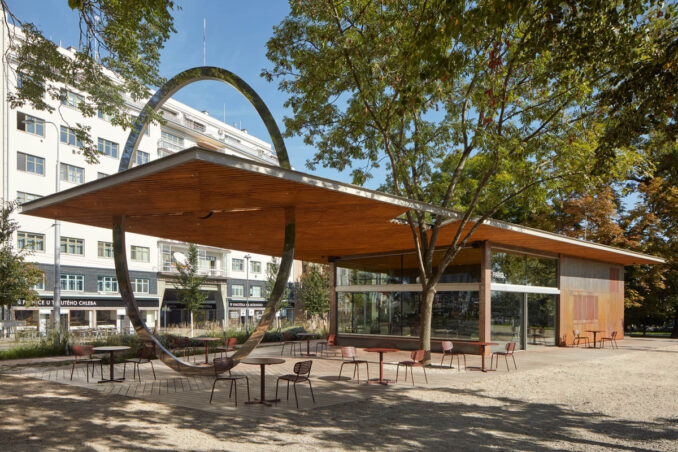
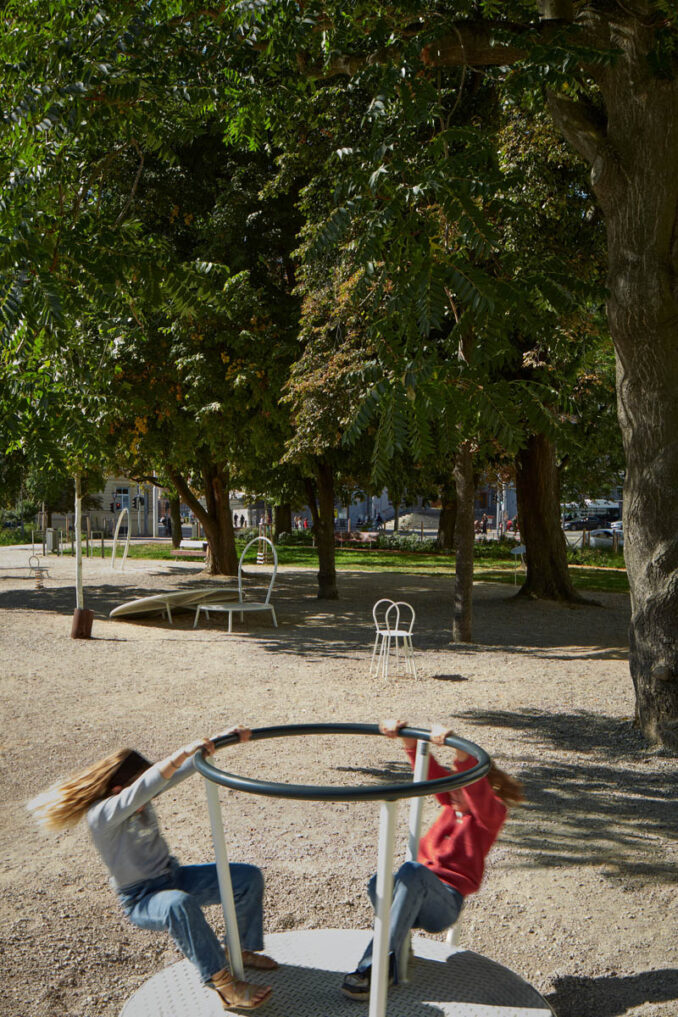
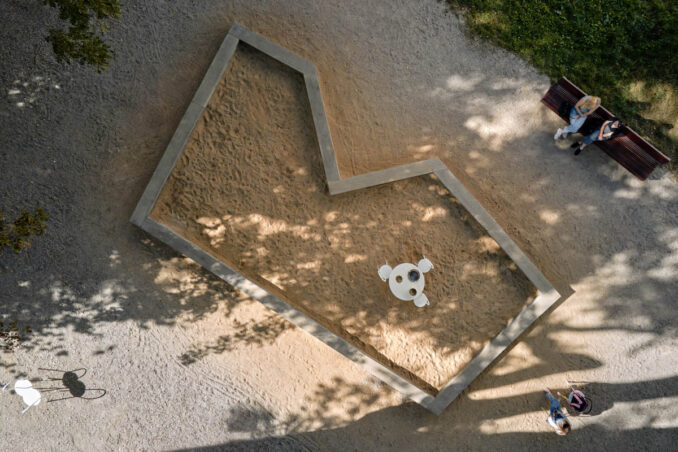
The café’s partially transparent roof accommodates a tree growing through it. The foundations elevate an eight-meter ellipse – the Sun, intersected by the café’s roof. Half of the structure mirrors above the rooftop plane. The polished steel ellipse disappears during the day and reappears with the sunset thanks to a lighting installation, delicately completing the visual axis from the centre. The theme of reflection, beginnings, and subtle questions related to our society is evoked by the neon word ‘Budoucnost’ (Future) on the rusty façade of the café, as the facade is made of weather-resistant steel that gradually rusts.
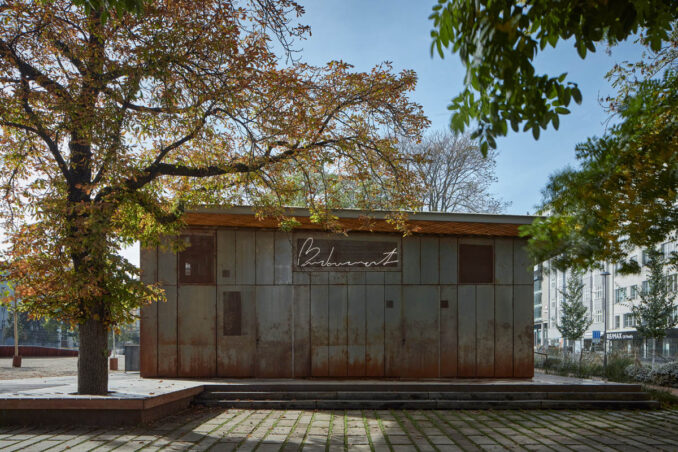
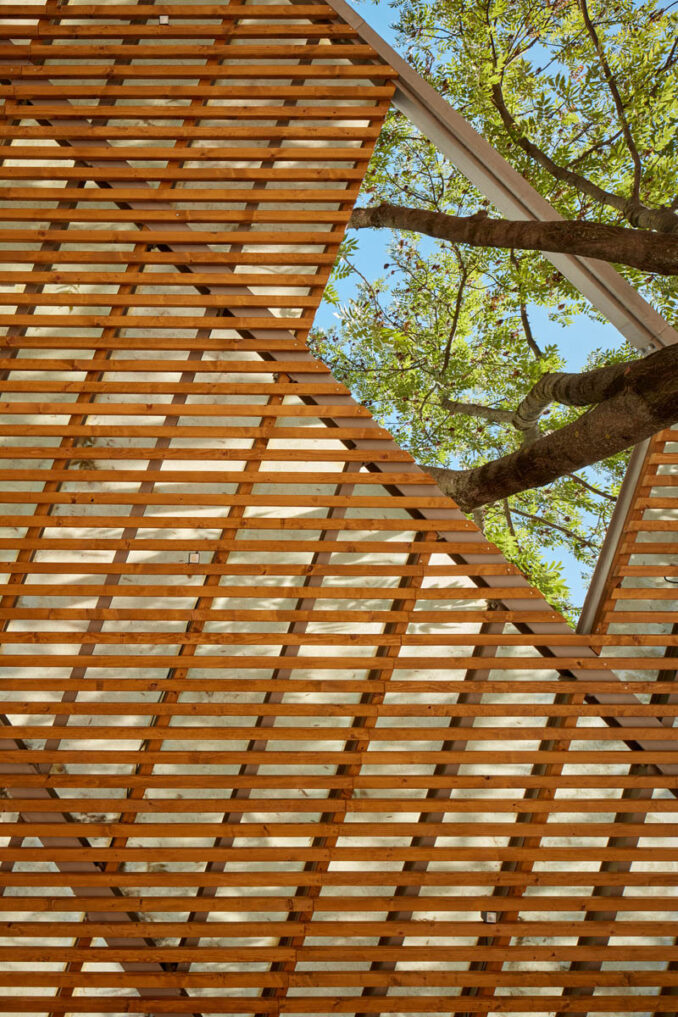
The light gravel beneath the tree canopies, casting flickering shadows, invites you to stay. The carousel and differently-sized chairs and tables are the focus of the children. The concept of the city inspires original play elements as a cafe metropolis. Various-sized white elements seem to scatter throughout the park. In contrast to the lively surroundings of the café, there are grassy and meadow areas that, on the contrary, offer peace and shade along the circular promenade. A prominent edge visually connects the park to its surroundings. Walking around, one can enjoy each season based on the blooming perennials and bulbs. A protected habitat is created by flowers, shrubs, and trees, shaping an oasis of tranquility and safety. Moravian Square Park entrances are designed along observed paths. A method of mapping original beaten paths in fresh snow using drone imagery was employed. A crucial route consists of a wide main pathway, smaller radial connections, and a circular promenade complemented by small grass-covered trails.
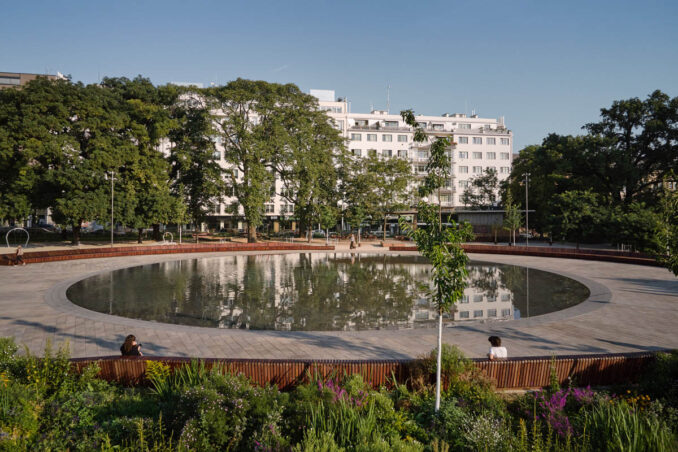
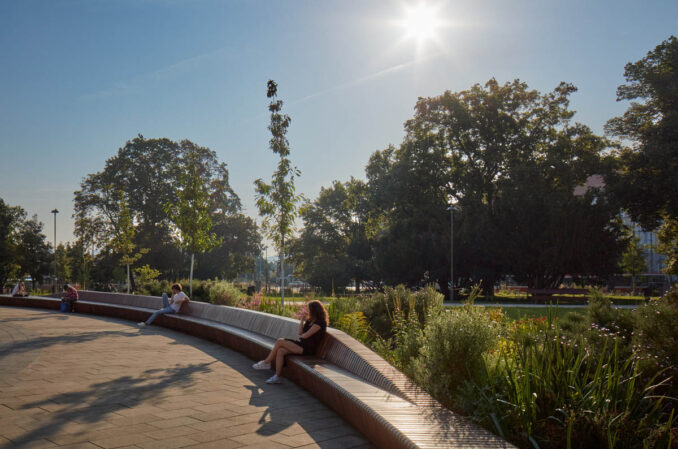
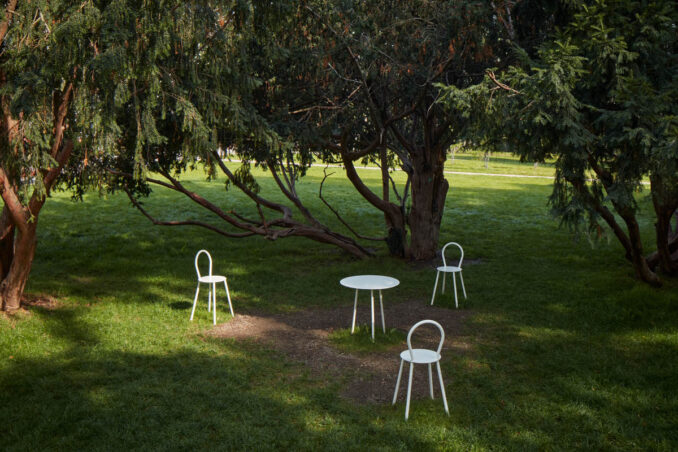
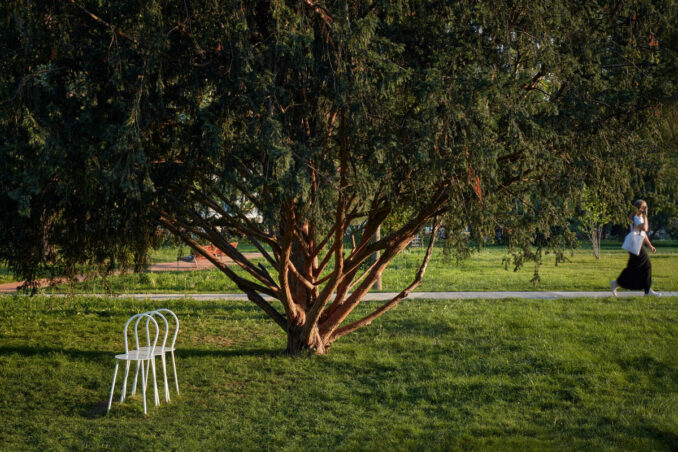
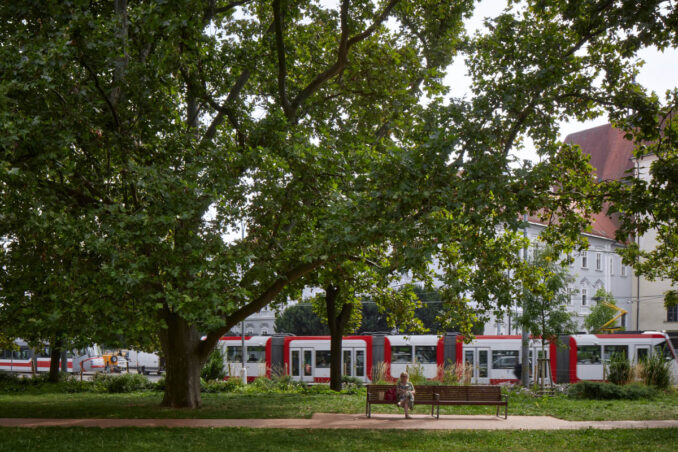
Environmental Sustainability
The blue-green infrastructure restores the water regime to its original state. These nature-inspired measures maximise rainwater retention within the park, allowing it to safely infiltrate the ground and provide better support to the vegetation. During hot days, Moravian Square Park and its surroundings enjoy a favourable microclimate, which is also enhanced by the fountain feature and its cooling mist nozzles. Blue-green infrastructure is a fundamental measure for adapting to climate change in urbanised areas because it addresses flood prevention and drought systematically and most effectively. The park, with its blue-green infrastructure components, offers ecosystem services to citizens during climate fluctuations.
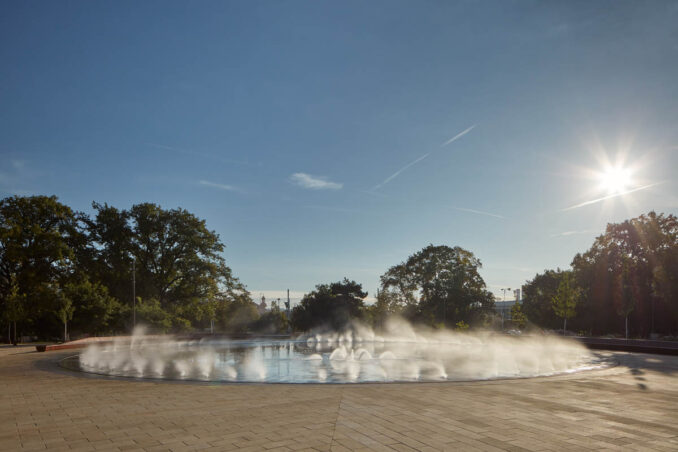
All paved surfaces are sloped, directing water into gravel swales and gravel furrow systems. A portion of the rainwater is used for watering the floodplain bed, trees in the gravel, or the strip on the northern edge of the park. New trees in the gravel are planted with a structural substrate (gravel enriched with biochar and compost) that retains moisture long after rainfall, preserves soil air, and distributes nutrients. Additional trees complement the park’s perimeter. The selection of species continues the existing diversity and adds non-native species with climate change tolerance. The crowns of shrubs are gradually pruned into solitary trees.
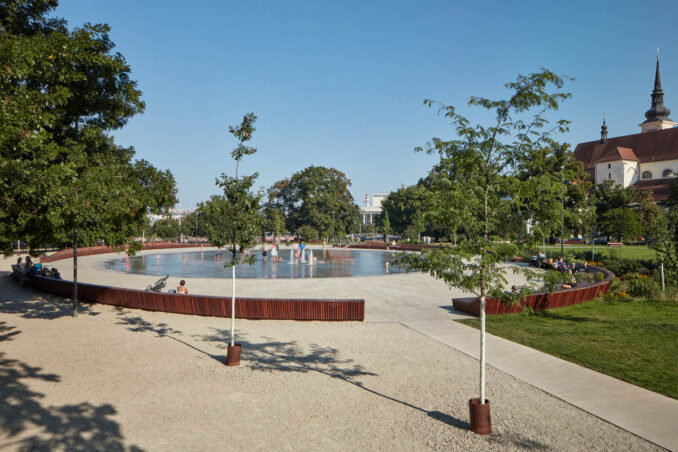
Larger lawn areas and understory beds receive and absorb water extensively due to their deep gravel profiles. Lawns come in three types: a picnic ground in the central park area; a grass and herb community in the semi-shaded areas under the trees and in the swale; gravel lawns around play equipment and seeded joints of granite paving.
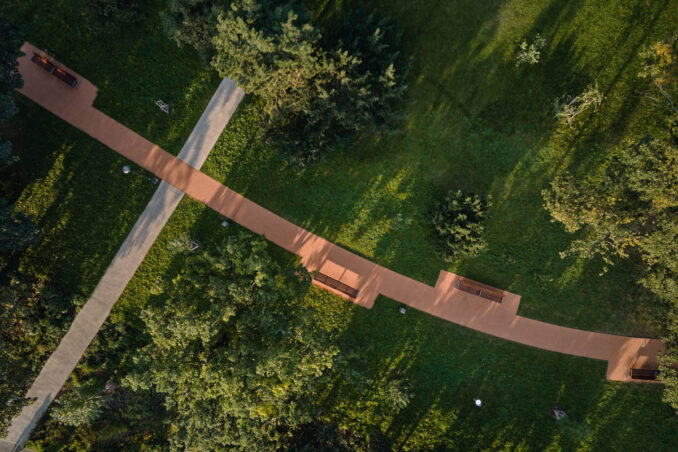
A prominent feature of the Moravian Square Park is the edging, comprising herbaceous layers, shrubs, and trees. This creates a protected and well-defined environmental framework with good conditions for the development of a diverse natural community. The bed with modelled depressions and elevations (mounds and swales) is inspired by natural processes in periodically flooded biotopes – ridges in the terrain of the floodplain landscapes of Moravia. Three types of habitats respecting hydric conditions include depressions, uplands, and a transitional zone. Similarly, a water-endowed bed of grass and ferns is found near the café.
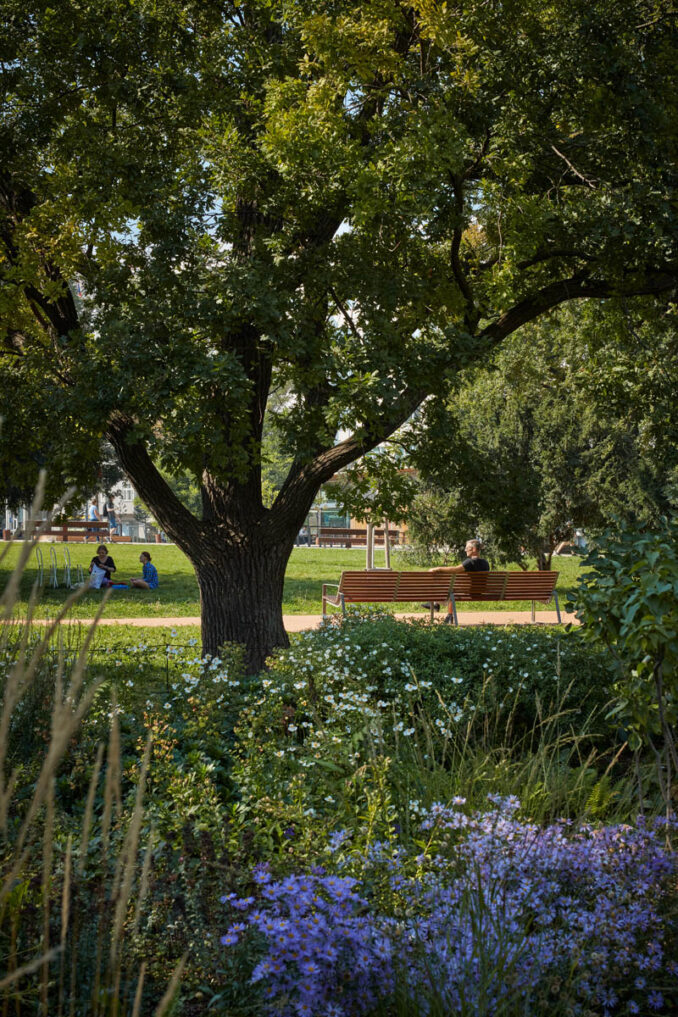
Moravian Square Park Revitalisation
Designer: Consequence forma architects
Authors: Martin Sládek, Janica Šipulová
Landscape-vegetation solutions: Klára Zahradníčkova
Children’s elements, collaboration on the ellipse: Richard Loskot
ㅤ
Project coordinator: Nina Vlček Ličková [Consequence forma architects]
Engineering: Barbora Bělunková [Consequence forma architects]
Landscape architecture, architecture: Jan Schleider, Petra Buganská [Consequence forma architects]
Partial cooperation: Prokop Matěj, Zuzana Včeláková, Katka Hlavičková [Consequence forma architects]
ㅤ
Landscape supervision: Karin Standler
Architectural supervision: Franz Sumnitsch
Rainwater management: Jiří Vítek
Arborist: David Hora
Perennials and bulbs: Ondřej Fous and Michaela Sinkulova
Grass communities: Marie Straková
Budget: Rudolf Hlaváč, Hana Pollertová
Standard furnishing design: mmcité
Statics of the café roof: Radek Bartoněk
Traffic and technical consultation: Petr Bijok
Construction technical consultation: Babka & Šuchma
Gravel technical consultation: Karel Zlatušk
Client Office of the Municipal District of Brno-střed
Photographer: BoysPlayNice
